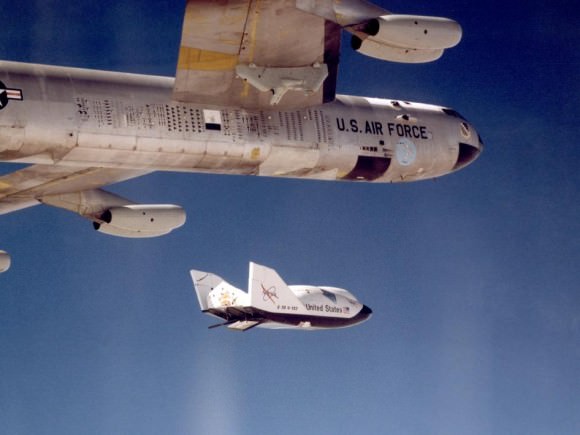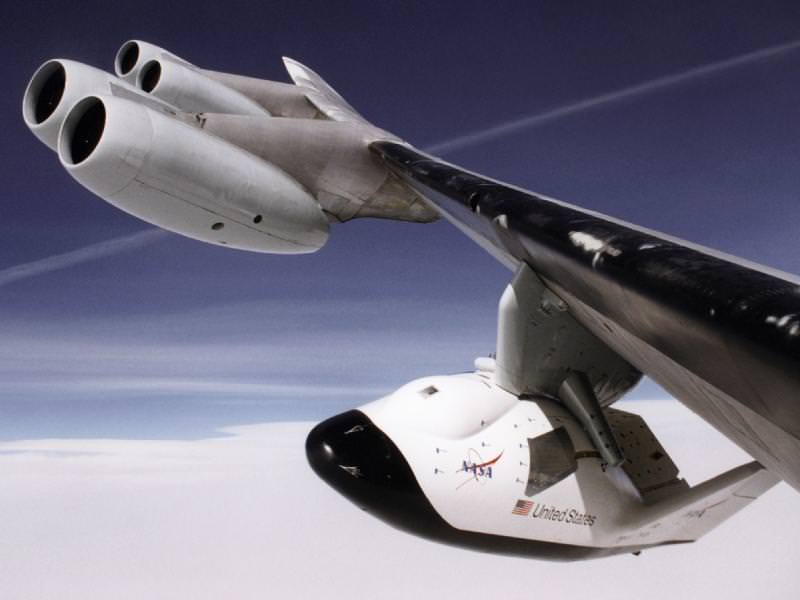[/caption]
Of all the missions and spacecraft that NASA has shelved over the years, I found the X-38 Crew Return Vehicle (CRV) to personally be one of the most disappointing. While its cancellation resulted in no loss of science and never stranded any astronauts in space, my disappointment was from strictly an aesthetic point of view: this was the cutest little spacecraft I had ever seen. The X-38 was a prototype for a wingless lifting body reentry vehicle that was to be used as a crew return and/or rescue vehicle for the International Space Station, but it was canceled in 2002 due to budget cuts. I guess cuteness doesn’t get you far in the space biz.
The image above shows a test flight in 1999 where the the X-38 research vehicle was dropped from a B-52 airplane. Three different designs of the X-38 made flight tests, and the vehicle landed by using one of the biggest aerofoil parachutes ever made. The CRV was designed to fly automatically from orbit to landing using onboard navigation and flight control systems, but backup systems also would have allowed the crew to pick a landing site and steer the parafoil to a landing, if necessary. The X-38’s landed on skids, not wheels, reminiscent of the famed X-15 lifting body research aircraft.
The X-38 was developed at NASA’s Dryden Flight Research Center at Edwards Air Force Base in California, and atmospheric test vehicles were actually built by Scaled Composites – the very same company that later built SpaceShipOne and won the X PRIZE.

The X-38 looks like a mini-space shuttle, and would have fit into the payload bay of the full-size space shuttles.
X-38 weighed 10,660 kg and was 9.1 meters long. The battery system, lasting nine hours, was to be used for power and life support. If the crew from the ISS had to make an emergency return to Earth, it would only take two to three hours for the CRV to reach Earth.
One of the prototypes can now be seen at the Strategic Air and Space Museum in Ashland Nebraska, located just off Interstate 80, about 20 miles southeast of Omaha.
For more info about the X-38, see this NASA webpage.

